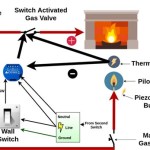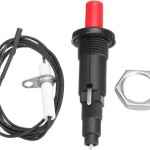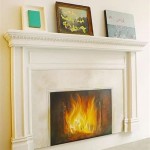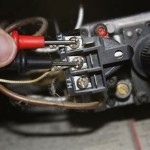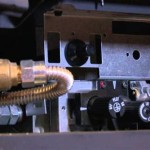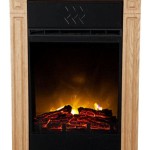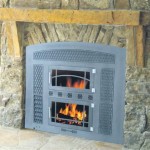Media Cabinet Beside Fireplace: Design Considerations and Functional Benefits
Integrating a media cabinet beside a fireplace presents a unique design challenge. The inherent warmth and focal point nature of a fireplace often necessitate careful consideration of materials, aesthetics, and functional requirements when incorporating adjacent media storage. This article will explore the various factors to consider when designing a media cabinet for placement beside a fireplace, including safety, design aesthetics, and functional integration.
Safety Considerations for Media Cabinets Near Fireplaces
Perhaps the most crucial aspect of placing a media cabinet near a fireplace is safety. Fireplaces generate significant heat, which can damage electronic equipment, warp wood finishes, and even pose a fire hazard if combustible materials are positioned too close. Thoroughly understanding the fireplace's operating characteristics and the local building codes is paramount.
First, the type of fireplace significantly impacts safety considerations. Wood-burning fireplaces generate the highest temperatures and radiate heat outwards, requiring the most generous clearances. Gas fireplaces, while generally producing less radiant heat, still require adherence to manufacturer recommendations regarding clearances for combustible materials. Electric fireplaces, although the safest in terms of fire risk, can still generate localized heat that may affect the lifespan of electronic components.
Second, the materials used in the construction of the media cabinet must be carefully selected. Solid wood, while aesthetically pleasing, can be prone to drying out, cracking, and warping when exposed to prolonged heat. Engineered wood products, such as plywood or MDF (Medium-Density Fiberboard), offer greater stability and resistance to heat-induced deformation but may still require a heat-resistant finish. Consider using materials with a high fire-resistance rating, especially for components closest to the fireplace.
Third, proper ventilation is crucial for preventing heat buildup within the media cabinet. Enclosed compartments can trap heat generated by electronic devices, potentially leading to overheating and component failure. Incorporating ventilation grilles or leaving open spaces at the back of the cabinet allows for natural convection and airflow, dissipating heat and maintaining a safe operating temperature for equipment. Wire management systems should also be designed to allow for ample airflow, preventing wires from overheating and potentially becoming a fire hazard.
Fourth, consider installing heat shields or barriers between the fireplace and the media cabinet. These can be constructed from non-combustible materials like metal or fire-resistant ceramic tiles. The shield effectively blocks radiant heat, protecting the cabinet and its contents. The size and positioning of the heat shield should be determined based on the fireplace's heat output and the proximity of the cabinet.
Finally, regularly inspect the media cabinet and the surrounding area for any signs of heat damage, such as discoloration, warping, or cracking. Check the temperature inside the cabinet with a thermometer to ensure that it remains within a safe operating range for electronic equipment. Addressing any potential issues promptly can prevent more serious problems from developing.
Aesthetic Integration: Blending Form and Function
Beyond safety, the aesthetic integration of a media cabinet beside a fireplace is crucial for creating a cohesive and visually appealing living space. The design should complement the style of the fireplace and the overall décor of the room.
One key aspect is matching the architectural style. A modern fireplace with clean lines might pair well with a minimalist media cabinet featuring sleek surfaces and hidden hardware. A traditional fireplace with ornate detailing could benefit from a cabinet with raised panel doors, decorative moldings, and a richer wood finish. Consider the existing architectural elements of the room, such as crown molding, baseboards, and window trim, and incorporate similar details into the media cabinet design to create a sense of continuity.
Color and finish are also important considerations. The color of the media cabinet should complement the fireplace surround and the surrounding walls. A contrasting color can create a focal point, while a matching color can help the cabinet blend seamlessly into the background. The finish should be durable and easy to clean, especially in areas prone to dust and soot. Consider using a matte finish to minimize glare and reflections, particularly if the cabinet houses a television.
Scale and proportion are critical for achieving visual harmony. The media cabinet should be appropriately sized for the space and should not overwhelm the fireplace. A cabinet that is too large can make the room feel cramped, while a cabinet that is too small can look insignificant. Consider the height of the fireplace mantel and the width of the surrounding wall when determining the dimensions of the cabinet. Balance is key – aim for a symmetrical or asymmetrical arrangement that feels visually balanced and pleasing.
The choice of materials can also contribute to the overall aesthetic. Wood cabinets offer warmth and natural beauty, while metal cabinets can add a touch of modernity and industrial chic. Glass doors can showcase decorative items or electronic equipment, while solid doors can conceal clutter and create a cleaner look. Consider incorporating a mix of materials to add visual interest and texture to the design. For example, a wooden cabinet with metal accents can create a sophisticated and contemporary look.
Finally, consider the placement of the television. If the television is to be mounted above the fireplace, the media cabinet can serve as a base for the mounting equipment and can provide storage for cables and other accessories. If the television is to be placed on the media cabinet, ensure that the cabinet is sturdy enough to support the weight of the television and that the viewing angle is comfortable. Consider using a swivel mount to allow for flexible viewing angles.
Functional Integration: Maximizing Storage and Utility
A media cabinet beside a fireplace should not only be aesthetically pleasing but also highly functional. The design should maximize storage space and provide convenient access to electronic equipment and accessories.
Storage needs are paramount. Analyze the types of items that need to be stored in the cabinet, such as media players, gaming consoles, DVDs, remote controls, and other accessories. Design the cabinet with a combination of shelves, drawers, and compartments to accommodate these items. Adjustable shelves allow for flexible storage options, while drawers can be used to conceal smaller items and keep the cabinet organized. Consider incorporating specialized storage solutions, such as pull-out media racks or hidden compartments for cables.
Cable management is crucial for maintaining a clean and organized appearance. Design the cabinet with cable passthrough holes to allow for easy routing of cables from electronic devices to the television and other components. Use cable ties or sleeves to bundle cables together and prevent them from becoming tangled. Consider incorporating a power strip with surge protection to protect electronic equipment from power surges. Hide the power strip in a dedicated compartment to keep it out of sight.
Accessibility is another important consideration. Design the cabinet with doors or drawers that open easily and provide convenient access to the contents. Consider using soft-close hinges and drawer slides to prevent slamming and ensure smooth operation. The cabinet should be positioned in a location that allows for easy access to the controls on electronic devices. Consider using a remote control extender to allow you to control electronic devices even when they are hidden behind closed doors.
Consider the integration of smart home technology. If you have a smart home system, design the media cabinet with a dedicated space for the hub or control panel. Incorporate wireless charging pads for mobile devices and other accessories. Consider integrating smart lighting into the cabinet to create a more immersive viewing experience. For example, you could install LED strip lights along the back of the shelves to create a soft glow.
Finally, consider the potential for future expansion. Design the media cabinet with enough flexibility to accommodate future changes in technology. Leave space for additional components or accessories that you may acquire in the future. Consider using modular components that can be easily added or removed as needed. This will ensure that the media cabinet remains functional and relevant for years to come.
By carefully considering these safety, aesthetic, and functional aspects, one can design a media cabinet that not only complements a fireplace but also enhances the overall functionality and enjoyment of the living space. The key lies in balancing the inherent design challenges with practical solutions that prioritize safety, aesthetics, and usability, ultimately creating a cohesive and inviting environment.

Tv And Fireplace In One Room Find The Perfectly Happy Spot For That Black Beast Form Design Tasteful Interiors Living Well

Layout Family Room Design Living Makeover Remodel

Tv And Fireplace In One Room Find The Perfectly Happy Spot For That Black Beast Form Design Tasteful Interiors Living Well

Cabinets Next To Fireplace Design Ideas

Tv And Fireplace In One Room Find The Perfectly Happy Spot For That Black Beast Form Design Tasteful Interiors Living Well

32 Best Tv Stand Next To Fireplace Ideas Home Living Room Alcove Shelving

ᑕ❶ᑐ Tv Console With A Fireplace Vs Wall Mount

European Style Built In Tv Cabinet Around Fireplace Tv17 L04 Oppein Home Abuja

Tv In Built Shelf Next To Fireplace Mantel Shelves Living Room Cabinets Ins

Flat Panel Tv And Fireplace Next To Built In Bar Cabinet Contemporary Living Room

